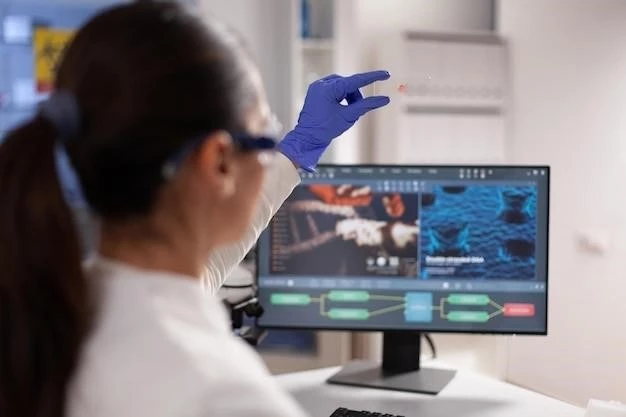Overview of Neurilemmomatosis
The relationship between neurilemmomatosis and neurofibromatosis has been discussed, with recent studies suggesting a genetic connection.
The relationship between neurilemmomatosis and neurofibromatosis has been discussed in various studies, highlighting a possible genetic connection. Recent research indicates that the neurilemmomatosis gene locus may be located within the NF2 gene٫ hinting at similarities between the two conditions.
Relationship with Neurofibromatosis
Recent studies suggest a potential genetic link between neurilemmomatosis and neurofibromatosis, with findings pointing to a common gene locus.
Definition and Characteristics
A potential genetic connection between neurilemmomatosis and neurofibromatosis has been identified, indicating a shared gene locus within the NF2 gene. This suggests similarities and potential overlap between these two conditions.
Distinctions from Neurofibromatosis
Neurilemmomatosis can be distinguished from neurofibromatosis by the absence of cafneacute; au lait spots, neurofibromas, and a genetic component. Understanding these differences is crucial for accurate diagnosis and management.
Clinical Presentation
Neurilemmomatosis presents skin lesions such as multiple cutaneous neurilemmomas, distinct from neurofibromatosis types.
Skin Lesions
Neurilemmomatosis is characterized by multiple cutaneous neurilemmomas, presenting as nodular, infiltrated pigmented lesions, and plaque-like lesions consisting of papules. Recognizing these unique skin lesions is crucial for accurate diagnosis and management.
Central Nervous System Tumors
Neurilemmomatosis cases can involve central nervous system tumors, such as acoustic neuromas and multiple lesions, resembling findings in neurofibromatosis type 2 (NF2). Awareness of these presentations aids in accurate diagnosis and treatment planning.

Diagnostic Criteria
Imaging studies and histopathological examination are essential for diagnosing neurilemmomatosis accurately. Recognition of distinct characteristics aids in prompt identification and proper management.
Imaging Studies
Imaging studies play a crucial role in diagnosing neurilemmomatosis, allowing healthcare professionals to visualize central nervous system tumors, such as acoustic neuromas and multiple lesions. Utilizing imaging techniques helps in identifying and assessing the extent of the tumors for appropriate treatment planning.
Histopathological Examination
Performing a histopathological examination is crucial in diagnosing neurilemmomatosis accurately. It helps in identifying specific tissue characteristics that differentiate it from other conditions, aiding healthcare providers in making an appropriate diagnosis and treatment plan.
Management may involve surgical excision of tumors along with symptom management strategies tailored to individual needs.
Treatment Options
Effective management of neurilemmomatosis often involves surgical excision of tumors, followed by personalized strategies for symptom management focusing on individual patient needs. Early diagnosis and appropriate treatment planning are key in optimizing outcomes and quality of life for patients with neurilemmomatosis.
Management of Symptoms
Managing symptoms in neurilemmomatosis involves personalized strategies tailored to individual needs, aiming to alleviate discomfort and improve overall quality of life. Regular monitoring and close communication with healthcare providers are essential for optimal symptom control and well-being.
Prognosis and Complications
Understanding the recurrence rates and potential neurological sequelae associated with neurilemmomatosis is vital for long-term management and ensuring optimal patient outcomes. Early detection and appropriate interventions can help mitigate complications and improve prognosis.
Recurrence Rates
Understanding the recurrence rates associated with neurilemmomatosis is crucial for long-term prognosis. Regular follow-up assessments and monitoring help detect any potential recurrences early and initiate appropriate management strategies promptly.
Potential Neurological Sequelae
Understanding the potential neurological sequelae associated with neurilemmomatosis is crucial for comprehensive management. Regular neurological assessments and monitoring can help detect any emerging complications early and facilitate appropriate interventions to optimize patient outcomes.
Research and Genetic Discoveries
Recent studies highlight a potential genetic connection between neurilemmomatosis and neurofibromatosis, indicating a shared gene locus within the NF2 gene. Understanding these genetic findings is crucial for advancements in treatment and management strategies.
NF2 Gene Locus Connection
Recent discoveries have identified a link between neurilemmomatosis and the NF2 gene locus on chromosome 22q12. Understanding this genetic connection is vital for advancing research and potentially developing targeted therapies for individuals with neurilemmomatosis.
Recent Studies and Findings
Studies have identified a potential genetic connection between neurilemmomatosis and neurofibromatosis, suggesting a shared gene locus within the NF2 gene. These findings contribute to the understanding and management of neurilemmomatosis, paving the way for further research advancements in this field.

Differential Diagnosis
Recognizing the distinguishing features of neurilemmomatosis from other conditions is crucial for accurate diagnosis and appropriate management. Understanding these distinctions helps in providing tailored care to individuals with neurilemmomatosis.
Distinguishing Features from Other Conditions
Neurilemmomatosis can be distinguished from neurofibromatosis by the absence of certain hallmark signs and a genetic component. Recognizing these differences aids in accurate differential diagnosis and appropriate management strategies tailored to each condition.
Case Studies and Familial Neurilemmomatosis
Reported cases of familial neurilemmomatosis highlight the importance of genetic predisposition and clinical manifestations in multiple affected family members. Studying these cases can provide insights into the hereditary nature of neurilemmomatosis and guide targeted management strategies for families with a history of the condition.
Reported Cases of Familial Neurilemmomatosis
Reported cases of familial neurilemmomatosis shed light on the genetic predisposition and clinical manifestations observed in families with multiple affected members. Analyzing such cases can offer valuable insights into the hereditary nature of neurilemmomatosis and guide tailored management strategies for individuals with a familial history of the condition.
